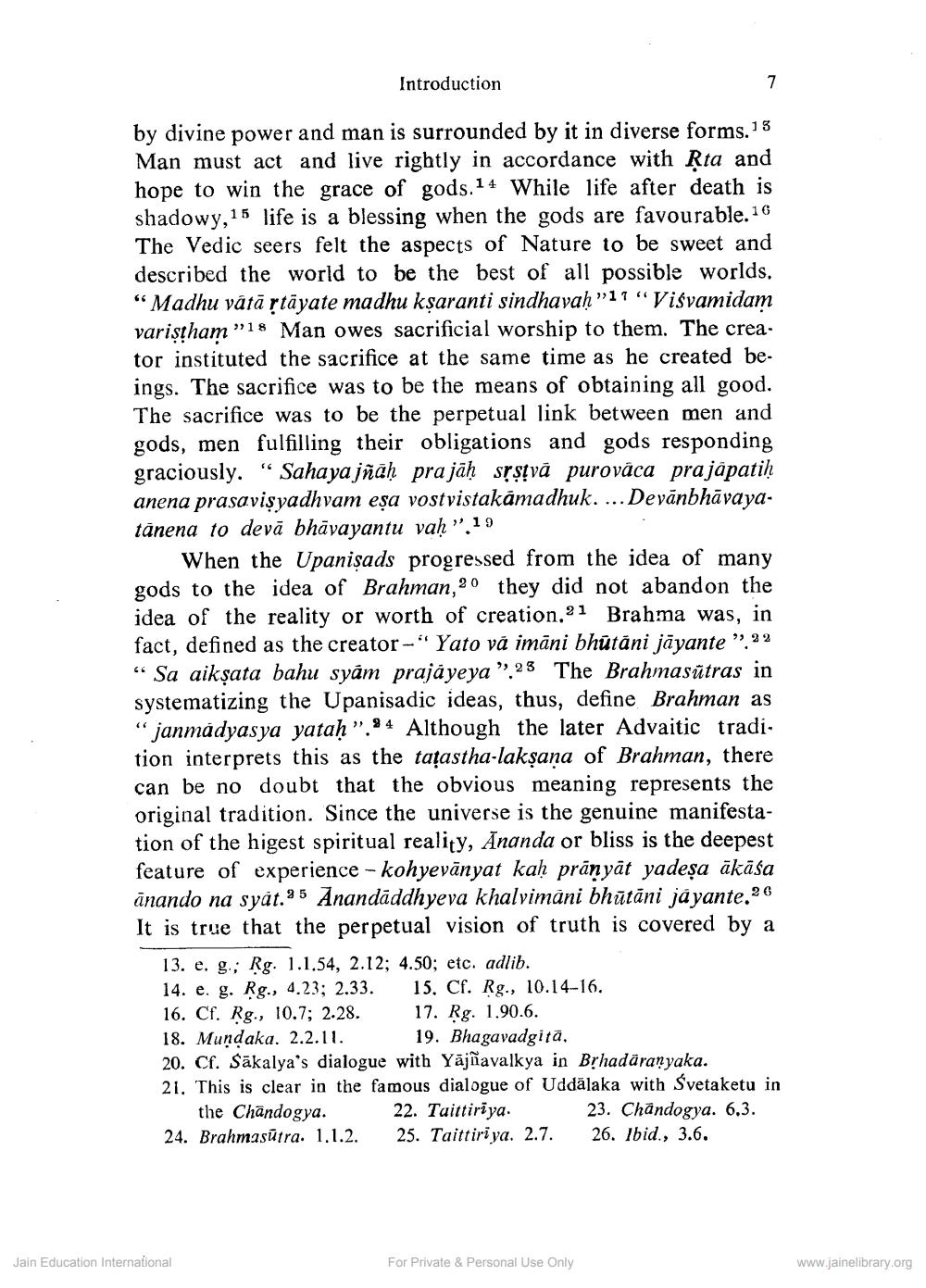________________
Introduction
7
by divine power and man is surrounded by it in diverse forms. 13 Man must act and live rightly in accordance with Rta and hope to win the grace of gods. 14 While life after death is shadowy, 15 life is a blessing when the gods are favourable.16 The Vedic seers felt the aspects of Nature to be sweet and described the world to be the best of all possible worlds. “Madhu våtārtāyate madhu ksaranti sindhavah"11"Visvamidam varistham”ls Man owes sacrificial worship to them. The creator instituted the sacrifice at the same time as he created beings. The sacrifice was to be the means of obtaining all good. The sacrifice was to be the perpetual link between men and gods, men fulfilling their obligations and gods responding graciously. “Sahaya jñāḥ prajāḥ sựsțvă purovāca pra jāpatiḥ anena prasavisyadhvam esa vostvistakāmadhuk. ...Deyānbhāvayatānena to devă bhāvayantu vaḥ”. 19
When the Upanişads progressed from the idea of many gods to the idea of Brahman, 20 they did not abandon the idea of the reality or worth of creation.21 Brahma was, in fact, defined as the creator -"Yato vá imāni bhūtäni jāyante" 22 “Sa aikșata bahu syam prajāyeya ".28 The Brahmasutras in systematizing the Upanisadic ideas, thus, define Brahman as “janmádyas ya yatah”.94 Although the later Advaitic tradi. tion interprets this as the taţastha-lakṣana of Brahman, there can be no doubt that the obvious meaning represents the original tradition. Since the universe is the genuine manifestation of the higest spiritual reality, Ananda or bliss is the deepest feature of experience - kohyevānyat kaḥ prānyāt yadeșa ākāśa ānando na syåt.35 Anandāddhyeva khalvimăni bhūtāni jayante.26 It is true that the perpetual vision of truth is covered by a
13. e. g.; Rg. 1.1.54, 2.12; 4.50; etc. adlib. 14. e. g. Rg., 4.23; 2.33. 15. Cf. Rg., 10.14-16. 16. Cf. Rg., 10.7; 2.28. 17. Rg. 1.90.6. 18. Mundaka. 2.2.11. 19. Bhagavadgitā. 20. Cf. Säkalya's dialogue with Yājñavalkya in Brhadäranyaka. 21. This is clear in the famous dialogue of Uddälaka with Svetaketu in
the Chandogya. 22. Taittiriya 23. Chandogya. 6.3. 24. Brahmasūtra. 1.1.2. 25. Taittiriya. 2.7. 26. Ibid., 3.6.
Jain Education International
For Private & Personal Use Only
www.jainelibrary.org




